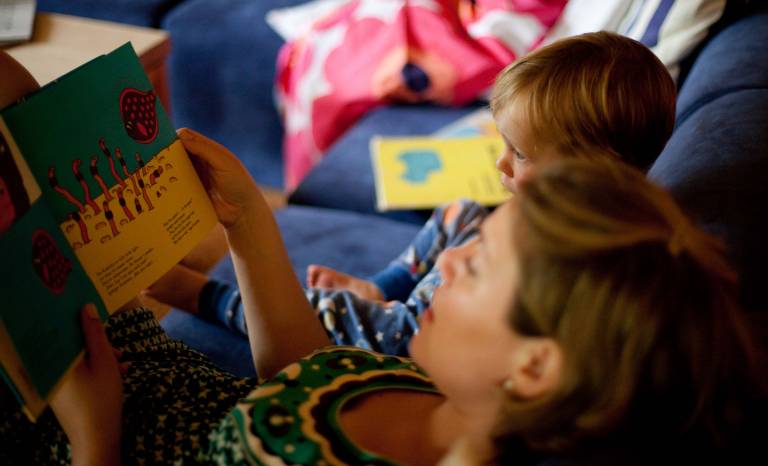Combining work and childcare can take up the entire day, research reveals
1 May 2020
New research suggests that combining work and childcare during lockdown takes up virtually the entire day for some groups of parents.

The Institute for Fiscal Studies report, conducted with UCL Institute of Education (IOE) academic Professor Almudena Sevilla, examines the impact of social distancing on UK children and families.
Since 23 March, schools and nurseries have been shut for most children across the UK due to the COVID-19 pandemic. The social distancing rules preclude most activities outside the home – such as team sports, going to the playground, and meeting up with friends and relatives.
Through analysing people’s time use, the researchers found that whereas working parents spent around 60% of their non-sleeping time either working or with their children before social distancing, this can now take up most of the entire day.
School closures and social distancing has caused a dramatic change in children’s routines too. Before the pandemic, children aged 8 and older spent on average around 30 hours a week at school during term-time. However, 8- to 16-year-olds also spent 22 hours a week on activities outside the home, which are now largely ruled out by current social distancing measures.
The report argues that for working parents to be able to meet both work and childcare commitments, they will need more flexibility on when they can work, as well as where, where possible.
The researchers also suggest that the government should consider extending the current Coronavirus Job Retention Scheme to employees who reduce their working hours to accommodate childcare responsibilities. The current scheme offers an 80% wage replacement for people who have been furloughed by their employers, allowing them to stay employed without working any hours.
This could lead to dual-earner couples struggling with childcare responsibilities to have one parent continuing to work their usual hours while the other is furloughed. There are concerns that could affect the gender balance in how childcare and paid work are distributed between couples.
Before social distancing came into effect, Women averaged 5.6 hours a day of work on weekdays, but spend 1.2 hours alone with their child. By contrast, men worked nearly 8 hours a day on average, but do much less childcare on their own – just 20 minutes a day. The report states: “if the Job Retention Scheme encourages mothers to accept furlough more than fathers (for example, because they work fewer hours, or earn less per hour, and so earn less per week), it could exacerbate existing inequalities in childcare responsibilities and beyond.”
Almudena Sevilla is Professor in the IOE’s Department of Social Science and Centre for Time Use Research. Professor Sevilla’s current project, PARENTIME, received €2 million funding from the European Union as part of the ERC Consolidator Grant (2018-2022). The objective of PARENTIME is to develop new socio-economic theories that unpack the detailed mechanisms driving the inter-generational transmission of inequality.
Links
- Read the paper: ‘Trying times: how might the lockdown change time use in families?’
- View Professor Almudena Sevilla’s research profile
- Department of Social Science
- Centre for Time Use Research
- Institute for Fiscal Studies
Image
- Mother reading to child, courtesy of Lars Ploughmann, via Flickr (CC BY-SA 2.0).
 Close
Close

